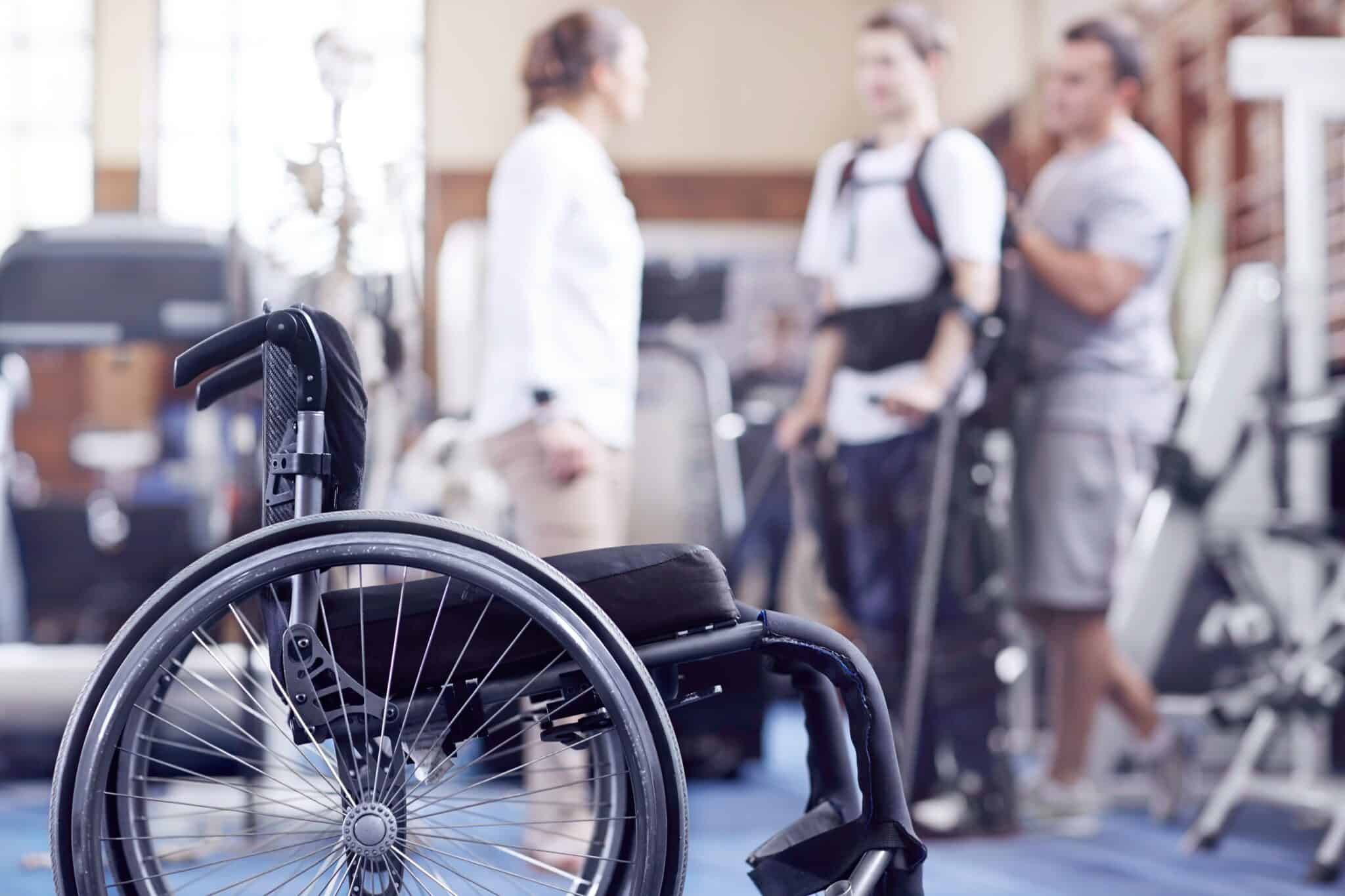
As of 2025, secondary medical complications following spinal cord injury are the primary drivers of catastrophic settlement values, often adding $5-15 million to base case valuations. When someone suffers a spinal cord injury due to another party’s negligence, the paralysis itself is only the beginning of a devastating medical cascade. Life-threatening conditions like autonomic dysreflexia, pressure ulcers that progress to bone infections, and respiratory failure emerge as “secondary” complications—but these complications are anything but secondary when it comes to legal compensation.
Under established legal doctrine, every foreseeable medical consequence of your injury is fully compensable, including the statistical likelihood of future complications over your lifetime. This means you shouldn’t just be paid for the pneumonia you had last month, but for the actuarially documented probability that you’ll experience multiple life-threatening respiratory infections over the next 30-40 years.
CHG Lawyers has secured significant compensation for catastrophic injury victims by meticulously documenting every complication and proving that these conditions are not “preventable patient failures” but inevitable medical realities of spinal cord injury.
If you or a loved one has experienced complications following a spinal cord injury, every symptom you document strengthens your case. Contact us today for a free, confidential consultation.
What Are Secondary Complications of Spinal Cord Injury?
Secondary complications of spinal cord injury are life-threatening or life-altering medical conditions that develop as direct consequences of paralysis, impaired sensation, and autonomic nervous system dysfunction caused by the original spinal cord damage. According to the National Spinal Cord Injury Statistical Center, these complications—not the paralysis itself—are the leading causes of hospitalization, long-term disability, and premature death among SCI survivors.
The most significant secondary complications include:
Respiratory Complications: The Leading Cause of Death
Pneumonia, respiratory failure, and ventilator dependence remain the leading cause of death after spinal cord injury, responsible for 27.3% of deaths in the first year and continuing as the primary mortality risk throughout a survivor’s lifetime. High cervical injuries (C1-C4) often result in permanent diaphragm paralysis requiring mechanical ventilation, while mid-cervical injuries (C5-C8) create severely compromised respiratory function making patients highly vulnerable to life-threatening infections.
Ventilator-dependent patients face lifetime costs exceeding $9.5 million over a 40-year life expectancy, including equipment ($25,000-$40,000 per ventilator, replaced every 5-7 years), 24-hour skilled nursing care, respiratory supplies, and frequent hospitalizations for respiratory infections.
Even non-ventilator-dependent cervical SCI patients require aggressive respiratory prevention including cough-assist devices ($7,000-$12,000), chest physiotherapy equipment ($15,000-$20,000), and hospitalization for pneumonia 2-4 times per decade at $20,000-$50,000 per admission.
Autonomic Dysreflexia: The Silent Killer
Autonomic dysreflexia (AD) is a life-threatening medical emergency affecting 48-90% of individuals with spinal cord injuries at level T6 or above, characterized by sudden, severe spikes in blood pressure that can cause stroke, seizure, or cardiac arrest within minutes. This condition occurs when painful stimuli below the injury level (most commonly a full bladder) trigger uncontrolled blood pressure elevation—often spiking from normal 110/70 mmHg to dangerous 200-300+ mmHg within 5-10 minutes.
The terrifying reality is that episodes can occur multiple times per week, triggered by situations that seem mundane: a full bladder, constipation, tight clothing, or an ingrown toenail can be fatal. Every caregiver must be trained in emergency AD protocols, adding $1,500-$3,000 per person initially and $500-$800 annually for refresher training.
When AD causes stroke or death, the original defendant who caused the spinal cord injury remains fully liable under the “eggshell plaintiff” doctrine—defendants take plaintiffs as they find them, and the vulnerability to death from conditions that wouldn’t harm able-bodied individuals is a direct consequence of the defendant’s negligence.
Pressure Ulcers: From Minor Wound to Multi-Million Dollar Complication
Pressure ulcers affect 25-85% of spinal cord injury patients during their lifetime, and treatment costs range from $2,000 for stage II ulcers to $274,000-$458,000 for stage IV ulcers complicated by osteomyelitis (bone infection), according to the Agency for Healthcare Research and Quality.
Stage IV pressure ulcers represent medical catastrophes requiring multiple surgical debridements ($3,000-$15,000 each), wound VAC therapy ($10,000-$30,000 per month for 2-6 months), and flap surgery where muscle tissue is harvested and rotated to cover the wound ($80,000-$150,000), followed by 6-12 weeks of strict positioning requiring facility care ($45,000-$90,000).
The legal bombshell: flap surgery doesn’t permanently fix the problem. Recurrence rates range from 30-80%, meaning a single stage IV sacral pressure ulcer can require 3-4 surgeries over a patient’s lifetime, totaling $700,000-$2.5 million for just one wound location.
When pressure ulcers develop osteomyelitis, treatment requires 6-16 weeks of IV antibiotics ($30,000-$80,000), multiple surgical bone debridements ($25,000-$50,000 each), and carries a 10-20% risk of progression to fatal sepsis.
Neurogenic Bladder and Kidney Complications
Urinary tract infections occur 2.5-30 times more frequently in SCI patients than the general population, and 5-10% of patients progress to end-stage renal disease requiring dialysis within 15-25 years post-injury. Even with optimal bladder management through intermittent catheterization, SCI patients average 3-8 UTIs annually, with 15-20% progressing to pyelonephritis (kidney infection) requiring hospitalization and 5% progressing to life-threatening urosepsis.
Over a 40-year lifespan with 3 UTIs per year, total infection-related costs exceed $1.28 million. Add chronic kidney disease progression, stone formation (occurring 5-10 times more frequently than in able-bodied individuals), and potential dialysis ($90,000-$120,000 annually), and lifetime urological costs can reach $2.5-3.5 million.
Other High-Cost Complications
Heterotopic ossification (abnormal bone growth in soft tissue) affects 10-53% of SCI patients, causing pain, joint immobility, and requiring surgical removal at $35,000-$60,000 with 20-30% recurrence rates.
Spasticity management through intrathecal baclofen pumps costs $35,000-$50,000 initially, with refills every 3-6 months ($800-$1,500) and pump replacement every 5-7 years, totaling $400,000-$650,000 over 40 years.
Central pain syndrome affects 40-50% of SCI patients, causing chronic burning or electric shock-like pain despite lack of sensation. Lifetime pain management including medications, spinal cord stimulators ($40,000-$70,000 initially), and multidisciplinary treatment exceeds $500,000-$1.2 million.
Deep vein thrombosis and pulmonary embolism risk remains elevated for life, with 10-15% of first-year deaths attributed to PE. Lifetime anticoagulation therapy costs $200,000-$280,000, plus major bleeding event risks.
The Eggshell Plaintiff Doctrine: Why Complications Are Fully Compensable
The “eggshell plaintiff” doctrine holds that defendants take plaintiffs as they find them and are fully liable for all damages—even if those damages are far more severe than would occur in a person without the plaintiff’s vulnerabilities. Established in Vosburg v. Putney (1891) and consistently upheld across all U.S. jurisdictions, this doctrine is essential to defeating insurance company arguments that complications are “separate injuries” or “the plaintiff’s fault.”
Application to SCI Complications
When a defendant’s negligence causes spinal cord injury, they’ve created a profoundly vulnerable plaintiff susceptible to complications that wouldn’t harm able-bodied individuals:
- Autonomic dysreflexia stroke: An able-bodied person safely holds their bladder for hours. A T4 quadriplegic can die from a full bladder. The defendant is liable for the fatal stroke.
- Pressure ulcer sepsis: An able-bodied person sits for 6-8 hours without tissue damage. An SCI patient develops a stage IV ulcer from 3 hours of pressure. The defendant is liable for the $458,000 treatment cost and potential death.
- Respiratory failure from common cold: An able-bodied person recovers in 7-10 days. A C4 quadriplegic requires 3 weeks in ICU at $180,000. The defendant is liable for the full cost.
The doctrine eliminates “disproportionate harm” as a defense. Courts apply broad foreseeability—if medical literature shows complications occur in statistically significant percentages of SCI patients, they’re foreseeable and fully compensable.
Learn about catastrophic injury compensation and how we prove full damages.
Life Care Planning: Documenting Future Complications and Costs
Life care plans for spinal cord injury must account not only for complications that have occurred but for the statistical probability of future complications over the patient’s lifetime. When medical literature establishes that 73% of C4-C5 complete quadriplegics develop stage III or IV pressure ulcers within 20 years, the life care plan appropriately includes the $200,000-$458,000 cost weighted by that probability.
Defense attorneys challenge these projections claiming they’re “speculative,” but courts consistently admit testimony from qualified life care planners and medical experts who apply peer-reviewed epidemiological data to the specific patient’s risk factors (injury level, age, completeness, mobility).Example cost escalation: A base C5 quadriplegia case might value at $6.2 million in medical costs over 40 years. Add statistically probable complications—respiratory infections requiring hospitalization (2-3 episodes = $120,000), pressure ulcer requiring flap surgery with recurrences ($709,000), UTI progression to one sepsis episode ($120,000), and intrathecal baclofen pump for spasticity ($450,000)—and total medical costs increase to $7.6 million, a 23% increase of $1.4 million attributable solely to secondary complications.
How to Maximize Your SCI Claim by Documenting Every Complication
Every symptom you report to your attorney strengthens your case by establishing the causation chain from original injury to devastating complications. Insurance companies want to break this chain by claiming complications are “unrelated” or “preventable,” but comprehensive documentation defeats these tactics:
- Report all symptoms immediately: Even “minor” issues like a small red spot on the skin (stage I pressure ulcer), low-grade fever (possible UTI), or increased spasticity can be early warning signs of major complications.
- Maintain detailed medical records: Every doctor visit, emergency room trip, hospitalization, and procedure creates documentation establishing the progression and severity of complications.
- Photograph visible complications: Stage-by-stage photographs of pressure ulcers provide irrefutable objective evidence of tissue destruction and treatment response.
- Track all treatments and costs: Keep receipts for medications, medical equipment, nursing care, and all other out-of-pocket expenses related to complication prevention and treatment.
- Work with qualified experts: Physiatrists (physical medicine and rehabilitation specialists), life care planners, and economic experts translate medical complications into legally compensable damages that juries understand.
Insurance companies fight complication claims by arguing they were “preventable”—but published medical data shows that even with optimal prevention protocols, high-risk SCI patients still develop complications at rates 5-100 times higher than able-bodied individuals. Your legal team must expose these bad-faith tactics and prove through expert testimony that complications are inevitable medical realities, not patient failures.
Frequently Asked Questions: Spinal Cord Injury Complications and Legal Claims
Can I sue for complications that developed years after my spinal cord injury?
Yes, if you’re still within the statute of limitations for your original injury claim. Under the eggshell plaintiff doctrine, all foreseeable medical consequences of the original injury—including complications that develop months or years later—are compensable as part of the original claim. However, if you’ve already settled your case with a full release, you typically cannot reopen it for newly developed complications.
This is why comprehensive life care planning that projects future complications is essential before settling. If complications develop in a nursing home or hospital due to negligent care, you may have a separate medical malpractice claim against that facility in addition to your original injury claim.
What is autonomic dysreflexia and why is it legally significant?
Autonomic dysreflexia is a life-threatening emergency affecting individuals with spinal cord injuries at T6 or above, where blood pressure suddenly spikes to 200-300+ mmHg in response to painful stimuli below the injury level (often a full bladder). It can cause stroke, seizure, or cardiac arrest within minutes if untreated. Legally, AD is significant because it demonstrates the ongoing, life-threatening nature of SCI complications and dramatically increases life care planning costs (caregiver training, 24-hour monitoring, emergency protocols).
When AD causes stroke or death, the original defendant who caused the SCI remains fully liable under proximate cause principles—AD would not exist without the spinal cord injury.
How much compensation can I receive for pressure sores from a spinal cord injury?
Pressure ulcer compensation varies dramatically by severity. Stage II ulcers cost $2,000-$8,000 to treat; stage III ulcers requiring medical management cost $50,000-$150,000; stage IV ulcers requiring flap surgery cost $200,000-$458,000 per occurrence. Because recurrence rates are 30-80% depending on location and patient factors, lifetime costs for a single pressure ulcer site can exceed $700,000-$2.5 million when multiple surgical revisions are required. Total case value increases substantially when pressure ulcer complications are documented—often adding $1-3 million to the overall settlement or verdict when severe ulcers with osteomyelitis or sepsis are involved.
Courts have consistently held that pressure ulcers are foreseeable complications of paralysis and immobility, making them fully compensable.
Are spinal cord injury complications covered in my settlement or do I need a separate lawsuit?
All complications that are reasonably foreseeable medical consequences of your spinal cord injury are covered in your original injury settlement or verdict—you do not need separate lawsuits for each complication. This is why comprehensive life care planning before settlement is critical. The plan must include both complications you’ve already experienced (past medical costs and pain/suffering) and statistical projections of future complications over your life expectancy.
However, there’s an important exception: if you develop complications due to negligent care in a facility (nursing home, hospital, rehabilitation center), you may have a dual liability situation with claims against both the original tortfeasor who caused the SCI and the facility whose negligence caused additional harm.
How do insurance companies try to deny compensation for complications and how do we fight back?
Insurance companies use consistent tactics: (1) claiming complications were “preventable” and therefore the patient’s fault, (2) arguing complications are “unrelated” to the original injury and represent “intervening causes,” (3) challenging the cost projections for future complications as “speculative,” and (4) attempting to reduce damages through comparative negligence arguments.
We defeat these tactics through comprehensive medical expert testimony establishing that complications occur at statistically significant rates even with optimal care, life care planning testimony showing that future complication projections are based on peer-reviewed medical literature (not speculation), and application of the eggshell plaintiff doctrine proving that defendants are liable for all harm flowing from their creation of the plaintiff’s vulnerable medical state—regardless of whether the harm is “proportionate” to what others might experience.
Why Choose Cornish Hernandez Gonzalez?
Experience with Catastrophic Injuries
We’ve handled hundreds of serious injury cases in Miami. We understand the unique challenges of catastrophic injuries.
Resources for Complex Cases
Catastrophic Injury cases require significant resources. We have:
- Relationships with top medical experts
- Financial resources for lengthy litigation
- Technology for case presentation
- Support staff for detailed case management
Proven Results
We’ve recovered millions for Miami catastrophic injury victims. Our track record speaks for itself.
Personal Attention
We limit our caseload to provide personal attention. You’ll work directly with experienced attorneys, not junior staff.
Spanish-Speaking Team
Miami’s diverse community deserves legal representation in their preferred language. Hablamos español.
Don’t Wait – Your Future Depends on Action
Catastrophic Injuries change everything. The medical bills pile up quickly. The pain never seems to end. Simple tasks become impossible. Your family suffers watching you struggle.
But you don’t have to face this alone. Legal help is available, and time is running out.
Florida law gives you a limited time to file a claim. Evidence disappears. Witnesses forget. Insurance companies use delays against you.
The sooner you call, the stronger your case becomes.
Contact Cornish Hernandez Gonzalez Today
If you or someone you love suffered catastrophic injuries in Miami, we’re here to help. Our experienced burn injury lawyers will fight for the compensation you deserve.
Your consultation is completely free. We don’t get paid unless we win your case.
We Serve All of Miami-Dade County:
- Downtown Miami
- Coral Gables
- Aventura
- Kendall
- Homestead
- Hialeah
- Doral
- Pinecrest
Don’t let insurance companies take advantage of you during this difficult time. Call Cornish Hernandez Gonzalez today. Your recovery starts with a phone call.
Hablamos español.
Remember: You have limited time to protect your rights. Don’t wait – call today.
Call (305) 745-7035 now for a free, no-obligation consultation.
This article is provided for informational purposes and does not constitute legal advice. Every TBI case is unique, and outcomes depend on specific facts and circumstances. For personalized legal guidance on your traumatic brain injury claim, consult with a qualified personal injury attorney in your jurisdiction.




